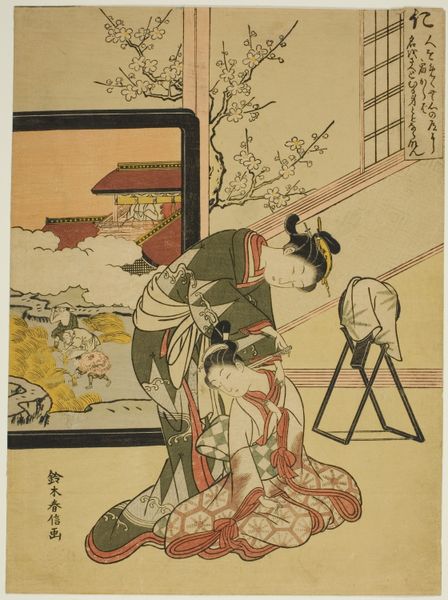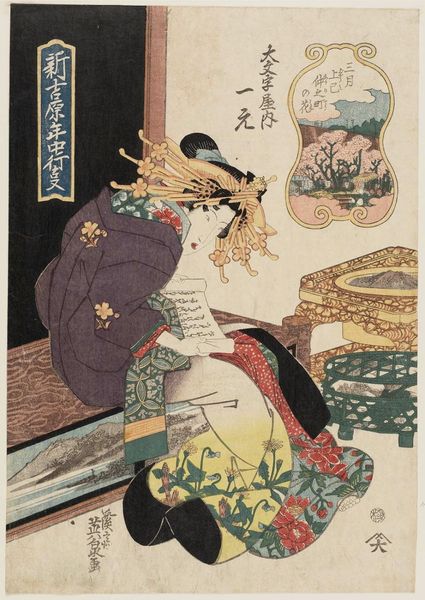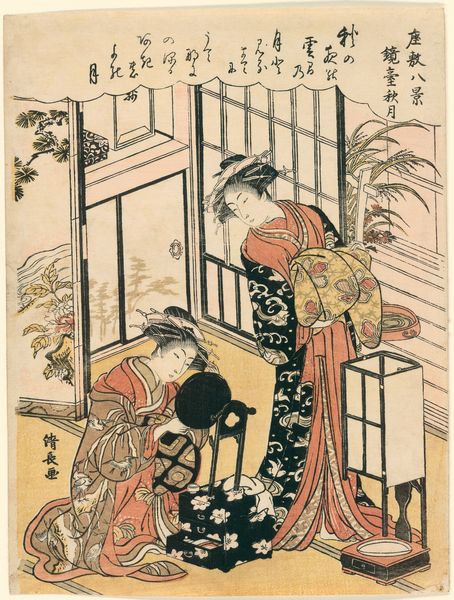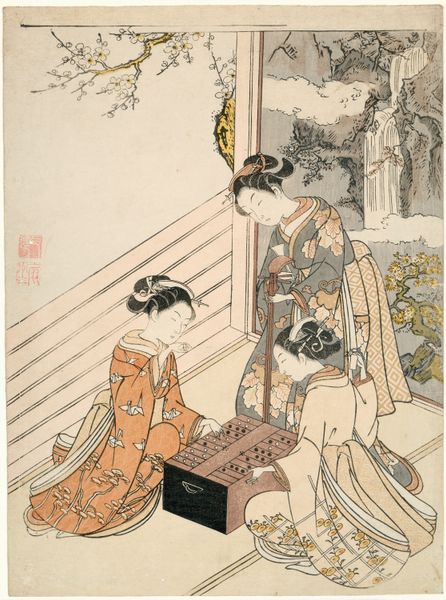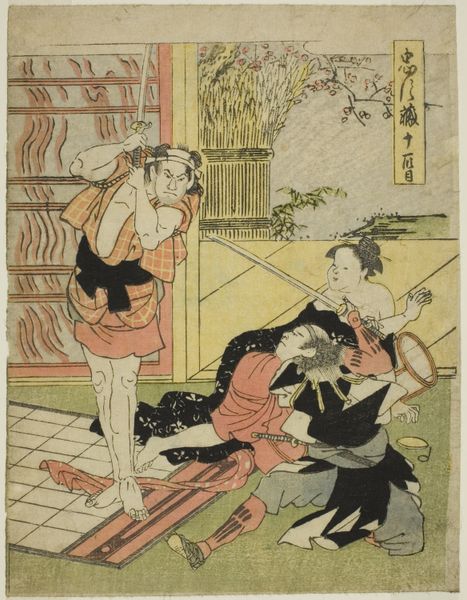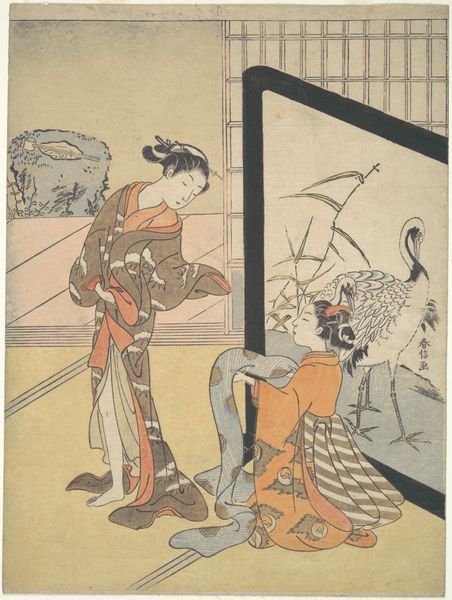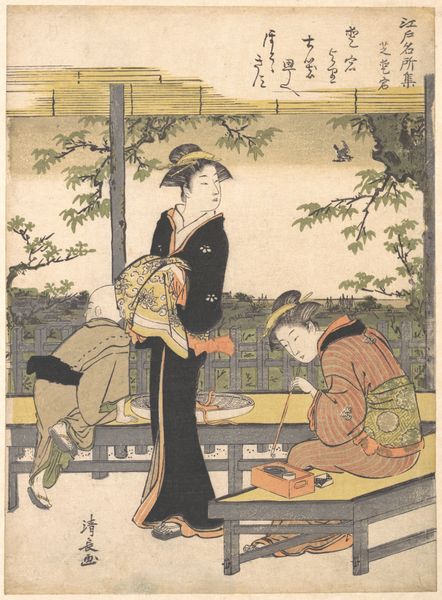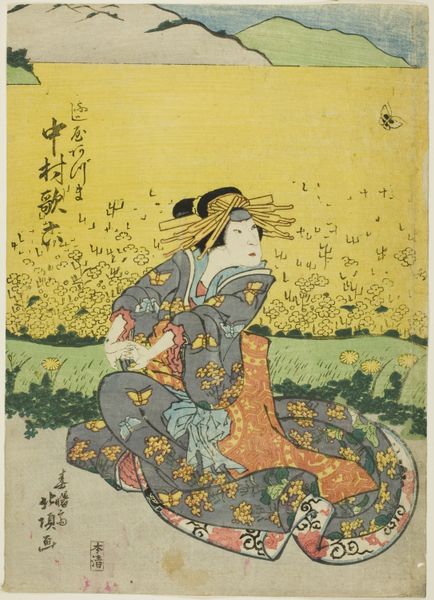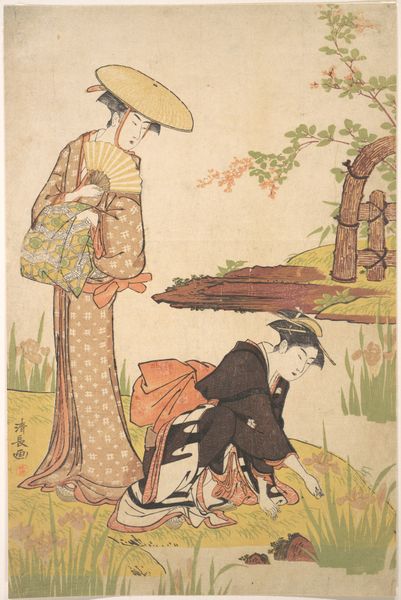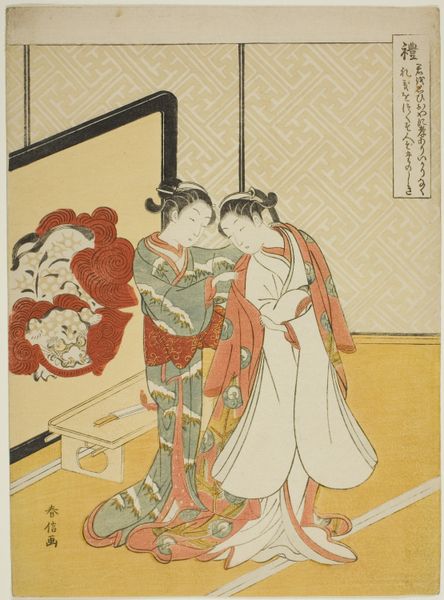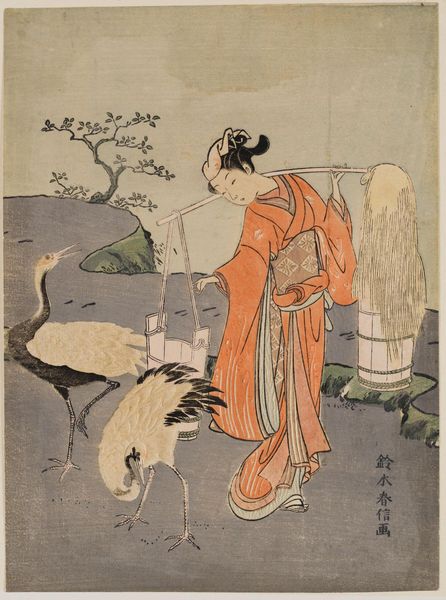
Fukurokuju, from the series "The Seven Gods of Good Luck in the Floating World (Ukiyo Shichi Fukujin)" c. 1769
0:00
0:00
print, woodblock-print
# print
#
asian-art
#
ukiyo-e
#
figuration
#
woodblock-print
#
genre-painting
#
history-painting
Dimensions: 11 × 8 in.
Copyright: Public Domain
Curator: This print by Suzuki Harunobu, dating from around 1769, presents Fukurokuju from the series "The Seven Gods of Good Luck in the Floating World," a woodblock print currently residing at The Art Institute of Chicago. Editor: Immediately, I am struck by the intimate composition. The carefully balanced planes and use of flattened perspective really bring a sense of order to this interior scene. The limited color palette contributes to a harmonious and understated visual experience. Curator: Absolutely. Fukurokuju, with his elongated head, is one of Japan's Seven Lucky Gods, embodying wisdom and longevity. Observe his serene engagement with the book; a classic symbol of scholarly life. Editor: Yes, but the symbolism goes even further, doesn't it? Note how the crane in the background, juxtaposed with blossoming plum branches, signifies a long life. The plum flowers also represent perseverance and hope, qualities reinforced by the contemplative atmosphere and artistic references. Curator: Precisely. The positioning of the woman playing the shamisen is particularly striking. The careful orchestration of shapes and colors here directs our gaze, doesn't it? How the gentle curves of her robe interact with the angles of the instrument! Editor: Indeed, it creates a visual harmony which evokes calm and serenity. Consider too, the subtle contrast of textures achieved through woodblock printing; the soft rendering of the woman's skin against the rich patterns of their clothing and surrounding textiles. It’s almost tactile! Curator: We cannot overlook the placement of textual elements; it also functions as a vital component in the composition. This print stands out within the Ukiyo-e tradition, showcasing his pioneering mastery in the rendering of multi-colored prints. Editor: In seeing how both narrative and formal structure converge, the enduring appeal lies not just in its auspicious subject matter, but also in its sophisticated formal structure. I love the convergence between representation and stylistic innovation here. Curator: For me, seeing the interplay of formal and iconographic elements provides a nuanced view on late 18th-century Japanese aesthetics and culture. Thank you. Editor: A pleasure. Analyzing it piece by piece makes me appreciate how much cultural memory art preserves in its layers of images.
Comments
No comments
Be the first to comment and join the conversation on the ultimate creative platform.
